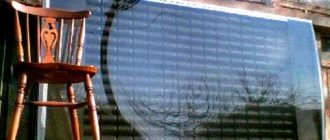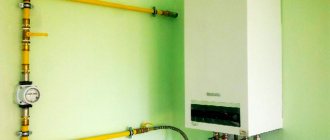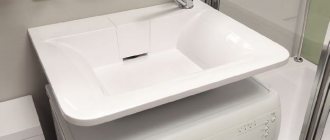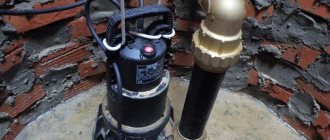Explaining to an experienced bathhouse attendant or an experienced steam lover why a stone mesh is needed on a bathhouse pipe is absolutely unnecessary. Anyone who has taken a steam bath at least once in their life knows how cruel and unforgiving a metal stove can be, especially a fire tube. This is a small section of metal chimney, only a meter long, connecting the flange of the furnace combustion chamber to the rest of the chimney duct.
A fire tube without a mesh with a stone heats the bathhouse too harshly
What properties of stone are taken into account when laying
The choice of stones for a bath is influenced by their cost, as well as a number of physical and chemical properties. First of all this:
- safety - when water is heated and evaporated from it, the stone should not release substances hazardous to health;
- strength directly dependent on heat resistance - the material should not be destroyed by exposure to high temperatures;
- Heat capacity – the ability to accumulate a large amount of heat and retain it for a long time.
Heat capacity depends on the heating temperature Source pinimg.com
Not all rocks have a full set of these important characteristics, so you cannot fill the heater with boulders of unknown origin found on the banks of a river or in the mountains. It is better to buy them in specialized stores, having inquired in advance about the properties of the selected filler.
But the listed properties have little effect on how to properly place stones in a sauna stove in order to get the maximum return and benefit from them. It is more important to consider thermal conductivity and size. And if great importance is attached to the aesthetic component of the steam room interior, then so is the appearance.
Stones differ in color, shape, type of processing Source 6gran.ru
Advantages of a do-it-yourself mesh
First, you need to understand the difference between a factory mesh heater and a homemade one:
- the factory heater has the correct shape;
- beautiful and aesthetic appearance;
- rarely subject to deformation;
- different shapes and types.
But a homemade product has advantages:
- low cost of the finished product;
- the correct size for the pipe in the bathhouse;
- installation, design and dismantling are chosen by the bathhouse owner himself;
- performs all the same functions as the factory mesh and also does an excellent job.
Laying options
The choice of how to properly place stones in a sauna stove depends on their characteristics. In order for the temperature in the steam room to remain high for a long time even after the fire in the firebox has gone out, it is necessary to properly equip and fill the heater. The main task is to spend less time and fuel on heating the stones and ensure their slow cooling. This can be done in different ways.
Laying taking into account thermal conductivity
This installation method is used when stones of different types with different degrees of heat transfer are used as a filler for the heater. In order to heat the entire mass up to the very top as quickly as possible, it is necessary that the lower layers heat up easily and transfer heat to those located above. That is, the lower the stone lies, the higher its heat transfer coefficient should be.
This is interesting! In the royal baths, instead of stone, cast iron cores were placed on the bottom, the thermal conductivity of which was many times greater. They are still used in modern Sanduns.
Today on sale you can find cast iron stones for baths in the form of balls, cones, shells Source prom.st
Let's give the maximum thermal conductivity coefficient for the main rocks used in heaters:
- crimson quartzite – 7.6;
- soap chloride – 4.7;
- jadeite – 3.6;
- basalt – 3.5;
- porphyrite – 3.37;
- gabbro-diabase – 2.98.
Laying according to shape and size
If you use a stone of the same type, it is advisable to purchase it not of the same size, but of several different fractions from 5-6 to 12-15 cm on the long side. To understand how to correctly place stones in a heater in a sauna, you need to think logically: the larger the element, the greater the amount of heat required to warm it up. This means that it is better to place it closer to the heat source.
It follows from this that the installation must be done in layers, reducing the size of the cobblestones in the direction from the heat source outward. In this case, be sure to take into account the design of the stove and the heater itself, which can be open or closed.
Possible heating schemes for stones Source ruspar.ru
See also: Catalog of companies that specialize in the design and construction of baths
However, small stones also have less surface area in contact with neighboring elements, which reduces heat transfer and heating rate. This problem can be solved by correctly positioning the stones in relation to each other and to the heat source, taking into account their shape.
You can increase the heating area using convection - the free passage of hot air between the elements. To do this, it is necessary to leave voids between them, and the stones themselves should not be laid flat on top of each other, but in a vertical position. In the case of end laying, vertical channels are formed between them, and the heated air does not have to bend around the transverse layers, looking for a way out and stagnating in the lower layers.
When installed correctly, the number of gaps increases and air flow barriers decrease Source twimg.com
Loose masonry not only allows free air circulation, but also extends the life of the stones. When heated strongly, they expand and increase in size, and this requires space. If it is not there, the elements that are in close contact with each other are subject to compression forces and begin to crack and collapse.
The degree of thermal expansion depends on the rock, but it is inherent to some degree in all stones. And this property can be destructive not only for them, but, if laid too tightly, for the walls of the oven. Therefore, voids must be left throughout the entire area of contact between the bookmark and the brick walls.
Laying depending on the type of heater
In closed structures, stones heat up quickly. For them, it is better to choose large fractions so that the backfill is sufficiently free, with channels for hot air circulation and steam release. And fill the heater completely. In this case, the quality of the steam is excellent.
Filling a closed heater Source ytimg.com
An open heater requires more time and fuel to heat up. In order not to reduce its effectiveness, the stones are laid exactly up to the sides, without constructing a slide from them, the top of which will not be able to warm up well, but will absorb thermal energy.
For reference! A small mound can be placed around the chimney if it passes through the heater.
And for a sauna stove powered by electricity, you need to select flat stones of a small fraction so that they fit freely between the heating elements and cannot damage them.
The design of an electric heater requires careful selection of stones Source elektrikaup.ee
Kinds
Round oven-meshOven nets for steam rooms differ in several parameters:
- According to the form. Round ones are installed on the chimney, this allows for more complete use of the thermal energy of wood combustion, saves space and reduces the likelihood of burns. Rectangular or rounded are attached to the stove body, repeating its shape. They make it possible to place additional stones.
- According to the material. The simplest, but fully functional option is made from reinforcing bars. Meshes are also made from square rods using the cold forging method, which is significantly more expensive. The most expensive, but also the most beautiful structures will be those assembled from stainless steel sheets with cut (perforated) holes of various shapes.
- According to the degree of openness. Traditional stoves with a closed heater, in which the stones do not lie in bulk, but are placed in grids, make it possible to store more heat. Open meshes allow the steam room to warm up faster. The easiest to manufacture will be meshes made from reinforcing bars.
What else to consider when filling the heater
To get the maximum benefit and pleasure from bath procedures, just knowing the rules for laying stones is not enough. It is also advisable to understand their impact on health, be able to determine the required loading volume, and clean and replace them in a timely manner.
How much stone do you need?
When buying a ready-made factory furnace, they focus on the characteristics declared by the manufacturer and select equipment of the required power. As a rule, the volume of the heater in such stoves is sufficient to warm up and maintain the temperature in the steam room, the size of which the stove is selected for.
When installing a homemade brick or metal heater, the required number of stones is calculated based on the volume of the room. It is believed that for every cubic meter there should be about 40-50 kg.
Popular schemes for installing sauna chimneys
How is the smoke exit structure arranged? Any element is a structure made of pipes, flanges, and fasteners. The main requirement for this building is the ability to operate at high temperatures without any changes in the properties and emissions of combustion products.
To prevent the chimney for a bathhouse from losing large amounts of heat, it is located as close as possible to the inner wall.
When there is more than one stove in a steam room or bathhouse, then each of them must be equipped with its own chimney. Otherwise, the thrust will lose strength. Smoke exhaust system specialists recommend the following. In cases where it is impossible to build several systems for stoves, a cutting system must be installed at a height of approximately 75 cm. It is also important to ensure that the inner surface of the future chimney is as smooth as possible. If there are any roughness inside, soot will accumulate on the walls. This may increase the risk of fire.
Video description
This short video explains how to determine the weight of a stone backfill:
Can different breeds be used?
There are no and cannot be any objections to mixing stones of different origins in one heater. On the contrary, this approach makes installation easier.
- Allows you to optimize costs by using inexpensive materials for the lower layers.
- Lay down the strongest and most heat-resistant rocks.
- Create an aesthetically attractive composition from stones of different colors.
For decoration, you can lay out the top layer with jasper or a coil Source prom.st
Limitations on the use of metal for a mesh frame
To make a mesh container you cannot use:
- Galvanized or painted wire, coated with PVC, polyester resins;
- Aluminum and bronze mesh wire meshes used in industrial chimneys and exhaust pipes as soot traps and spark arresters;
- Containers cannot be made from dissimilar materials that form galvanic couples, for example, aluminum-steel, copper-aluminium.
Such a mesh for pipes for stones made of non-ferrous metals quickly corrodes in the humid atmosphere of a steam room and often crumbles just before our eyes.
For a medium-sized sauna stove, you will need a mesh that can hold up to 20 liters of stone backfill. Since the stones used in the backfill are quite large, after placing the material in the mesh basket, an imbalance will inevitably arise, deflecting the container away from the chimney.
Therefore, the design must have at least two clamps that secure the mesh to the chimney. If small stone is used for backfilling, then the mesh should have a cell size of at least 10 mm. It is unsafe to use finer filler; the material produces very powerful steam, and sometimes the resulting fragments and screenings spill out through the mesh onto the floor of the steam room.
How to prepare stones for laying
If you have installed a new stove, before laying the stones you need to heat it well, completely filling the tank with water. The fire in the firebox is maintained for at least 2.5-3 hours, until the smell from burning paint and other materials used in the manufacture of the stove disappears.
Before placing stones in the sauna heater, they must be washed from dust and dirt. This procedure is necessary for any stones – both store-bought and independently collected. You can use a brush or dishwashing sponge with a hard abrasive layer.
Criterias of choice
When choosing a design and material for making a mesh, you should proceed from factors such as:
- Volume and weight of stones. The structure must support the weight with reserve. If you choose an aesthetic material with an elegant pattern and do not calculate the weight, the structure will deform and become ugly.
- Installation location: on the chimney or around the stove body.
- Material for production. Heat-resistant stainless steel is expensive, but does not deform or lose its appearance when heated repeatedly. A product made of ferrous metal (ordinary structural steel) will have to be made thicker and more massive, and to protect it from corrosion, it will have to be periodically tinted with heat-resistant enamel.
- Manufacturer's reputation and cost. In stores in Moscow and other cities, nets from 800 rubles from unknown manufacturers are presented. Obviously, such a product of garage tycoons will not last even a season. A reasonable price for ferrous metal mesh starts at 2000 rubles.
- If the products presented in stores do not suit the buyer in terms of price, shape, finish or other parameters, a simple mesh can be made with your own hands. It is suitable for both a Russian bath and a sauna.
How often do stones need to be replaced?
The durability and heat resistance of each breed depends on its initial characteristics and on the mode of operation of the bath. Basalt has the longest service life - it can withstand up to a thousand heating and cooling cycles. There are breeds in which this figure is several times lower.
It is impossible to say exactly at what point the stone will become “dead” and lose its ability to retain heat. This becomes clear when changes occur in the operation of the steam room: it takes longer to heat up and cools down faster. In this case, the stones should be sorted and completely or partially replaced.
But it’s better not to wait until the last minute, but to regularly inspect the heater, unload stones, clean them of plaque and soot, remove broken and porous specimens - they are of little use.
Advice! You can extend the life of the stones and clean them less often if you make the bottom of the heater solid and add hot water to the steam.
If the oven is brick
This chimney for a bathhouse is easy to build with your own hands. When the row of masonry covers the stove, the construction of the chimney system begins.
So, on the 21st row of brickwork it is necessary to form two channels. They will then be merged. Next, on the right you should block the space above the core. The gap between the core and the masonry will be 2-3 cm. Any voids are filled with mineral wool insulation. With the 22nd row of masonry, the opening will already be closed, and after that you can begin to lay and shift the channels to the middle. To prevent this ceiling from cracking in the future, it is advisable to lay another row of masonry above the stove core.
Next, the chimney will begin to narrow. Valves are installed here. They are made one above the other. Now the brickwork will go into fluff.
For those who have managed to build a brick oven, making a chimney will not be difficult. The main thing is that no cracks arise. Also, the standard for the cross-section of the pipe should not be exceeded. Otherwise, the gases will cool quickly.
Briefly about the main thing
The main rule for laying stones in a bathhouse is that the largest elements should be placed closest to the heat source, leaving free passages between them for the movement of hot air. As it rises, it will heat up the next layers, composed of a smaller fraction. It is also advisable to take into account the thermal conductivity and heat resistance of stones, laying down the strongest rocks that easily give off heat. Ideally, you should choose the filling for the heater taking into account its design, so that one condition for proper installation does not contradict another.
Ratings 0
Purpose
The mesh heater has another name - economizer . Its main purpose is that when smoke flows through the chimney, its heat is transferred to the pipe and it becomes very hot, which leads to drying out the air in the bathhouse. In addition, thermal radiation can harm human skin and it will be better if it is reduced a little.
To protect the stove channel, it is necessary to cover it with a stone layer. This reduces pipe overheating. And a heater net will be an assistant in this.
Main functions of gate valve
Being the main draft regulator inside the chimney, the damper regulates the combustion of fuel. To reduce the draft and reduce the intensity of the flame in the firebox, it is enough to close the slide valve. To increase traction, on the contrary, it is necessary to open it.
In fact, a gate is an ordinary metal plate that allows you to regulate traction.
It can be installed both in single-wall and double-wall boiler systems.
If the fireplace and stove are not in use, then during this period the gate valve must be in the closed position.
As a rule, the valve is installed at the initial section of the chimney (on the first meter), since this particular section remains uninsulated.
But on the contrary, it is not recommended to install a valve on a section of a well-insulated chimney pipe. Especially when it comes to double-circuit pipes. When the metal of the inner and outer pipe expands, the gate valve may jam.
So, the main tasks of a gate valve are:
- Function of the draft regulator in the chimney.
- Partial blocking of the chimney channel section.
- Regulator of flame burning intensity in the firebox.
Attention! If combustion in the firebox is carried out when supplying fresh air, a gate valve is not installed on the chimney!
Design Features
The gate device is influenced by various factors: temperature, pipe dimensions, flow conditions. During manufacturing, the design is based on a sheet of metal of different thicknesses, moving along a slot pocket and guide corners.
Depending on the base, the gates are either locking or reversible. Serve to restrict the movement of air flows.
There is a classification of devices according to the principle of operation, depending on the type of drive: manual, pneumatic, hydraulic, electric. Gates come in straight and oblique designs. The first option is a classic damper. Designed for supply and exhaust ventilation systems operating under forced influence. The second type of structure is used in systems related to industrial aspiration and transport powered by pneumatics. The gate received this name as a result of its placement at an angle of 45 degrees.
The best stainless steel chimneys with roof transit and rear exit
Such designs are suitable for boilers and furnaces that do not have a direct upward outlet of exhaust gases, and the exhaust channel is located on the side. To connect the chimney, you need a kit with a side inlet and the ability to attach a high vertical stand (without loading the boiler).
Phoenix 120 mm, 1 mm - good for a bath
This is the best option for a stainless chimney for a bath due to the wall cross-section of 1.0 mm, which allows you to transfer high heat from a nearby boiler, where wood burns at high temperatures. The rear connection provides open access to the rock laying area.
The diameter of 120 mm promotes strong draft, which will allow you to heat the bath to the desired maximum level. The upper part has a narrowing and an umbrella that prevent the hole from clogging.
Pros:
- wide insulation board that can easily be adjusted to the contours of slate or tiles to cover a hole in the roof;
- stainless steel stand to hold the side outlet from the boiler and the high mast; adjust the distance from the partition;
- internal flow diameter 120 mm;
- stainless steel wall thickness 1.0 mm for high heat;
- strong connection of all longitudinal joints using argon welding;
- the socket system is easy to assemble with your own hands;
- environmentally friendly insulating material inside;
- can withstand temperatures up to 1000 degrees;
- guarantee of operation with regular use for up to 15 years;
- Includes pre-furnace sheets and passage parts for floors;
- two sealants with a temperature range of 260 and 1200 degrees for high-quality sealing of adjacent parts;
- 8 clamps for assembly;
- tee for collecting condensate;
- The total length of the chimney is 6 m, suitable for outlet to a large height, which will provide good draft even with closely spaced houses.
Minuses:
- the cost of the set is 29,000 rubles;
- The insulating fiber is 30 mm thick, which is smaller than similar models.
Frequent errors and problems during installation
- Installation of a valve in an insulated area. Under the influence of thermal expansion, the damper may jam;
- Installation of a cast iron part in a metal chimney (cast iron weighs a lot);
- Using too thin steel or stainless steel with a low nickel content for the manufacture of valves. Such a product quickly deforms under the influence of hot gases and can burn out;
- Installation of a gate with a non-smooth surface;
- Installation of a valve without a hole for carbon monoxide release;
- Installation of handles that do not allow monitoring the position of the valve (applies to rotary elements).
The best stainless steel chimneys with roof passage and top outlet
These are structures for connection to boilers and fireplaces that have an outlet for gases from the combustion chamber in the upper part of the body.
From there, the system is mounted directly onto the roof, which requires partial dismantling of the roof, but requires a minimum of materials for transitions and connections, due to the straight trajectory. To select, it is important to calculate the length of the structure with the elevation above the ridge.
Ferrum set 115 mm, 0.8 mm - for any fireplace
This is the best stainless steel chimney for a home fireplace due to its direct connection and the optimal diameter for connecting to the outlet of 115 mm. Inside there is stainless steel with a sealed weld that will not allow condensation to pass through.
This is followed by a thick layer of mineral wool with a density of 120 kg/m3, which protects the attic floor and roof from fires. The outside of the chimney is wrapped in laser-welded galvanization, which eliminates damage to the galvanic layer.
Pros:
- all parts for installation in the kit, including ceiling elements for the roof;
- the insulating layer is resistant to temperatures of 700 degrees;
- an insulation thickness of 40-50 mm will prevent the surrounding materials from igniting from hot smoke and heat from the pipe;
- suitable for burning wood (rising ash will not damage or burn through the inner layer);
- screws included;
- stainless steel head that protects the outlet from blocking with snow;
- the package comes with a sealant that can withstand 1200 degrees;
- the box contains 7 sheets of basalt wool and 5 clamps for connecting high structures;
- pre-furnace sheet and stainless steel screen;
- AISI 439 steel on both parts of the pipe (on the one in the room and on the one outside on the roof).
Minuses:
- the thickness of the stainless steel connecting to the fireplace is 0.8 mm, and the cross-section of the pipe wall on the street is 0.5 mm;
- the pipe leading from the fireplace is not covered with insulation (protection starts only from the ceiling), so you can get burned on it;
- the cost of the entire set is 27,000 rubles.
Set Dymok 115mm, 0.5 mm - the most affordable option
This is the best stainless steel chimney at the most affordable price of 11,000 rubles for a complete set. Inside the sandwich structure there is stainless steel with a wall section of 0.5 mm, which is resistant to deformation thanks to the dense winding of Rocwool basalt wool and a galvanized layer on the outside.
The pipe connection is made using TIG welding technology, which provides a strong seam with minimal soot collection on the protrusions.
Pros:
- the price is one of the most attractive 11,000 rubles;
- The set includes an insulated umbrella that protects against precipitation;
- 4 stainless steel clamps for assembling a long pipe into a single unit;
- adapter from single-circuit structure to double-circuit structure;
- roofing adapter (master flush) included;
- 1 m of starting pipe without insulation and 3 m of double-layer pipe for leading to a high roof;
- sandwich thickness 40 mm;
- high quality AISI 439 stainless steel.
Minuses:
- there is no roof insulation, so you will have to purchase additional materials separately;
- only one fastening to vertical structures;
- metal thickness along the entire length of the pipe is 0.5 mm;
- Suitable for burning with coal or gas, but it is better to use wood rarely, so as not to heat up the thin walls too much.
Ferrum set 200 mm, 0.8 mm - for a powerful heating system
This is the best option for installing a heating system not only in a private home, but also in an office building, because the internal flow diameter is 200 mm, which can satisfy the needs of a serious boiler. The wall thickness of 0.8 mm has sufficient rigidity for long-term performance.
Pros:
- insulator filling density 120 kg/m3;
- high-strength stainless steel;
- withstands temperatures up to 700 degrees;
- simple assembly of the socket system;
- sealed internal seam;
- insulation thickness 50 mm;
- 7 meters of pipe for high reach;
- flange for passage through the ceiling;
- a large head covering not only the inner pipe, but also the outer one;
- 8 basalt wool slabs for attic insulation;
- 2 fasteners and 9 clamps included;
- stainless steel screen 1x1 m.
Minuses:
- the large outer diameter of the pipe 280 mm requires a large hole;
- price 42,000 rubles.
Elements of the chimney system
The main part of the chimney system is the stove pipe. There are 3 types with different sizes - 250, 500, 1000 mm in diameter.
The next element of the system is the throttle valve. It is used to adjust traction. It is a pipe with a built-in butterfly valve and an outward handle.
For installation you will also need tees, a cover, thermal insulation, a condensate collector, connections, an ash pan, special adapters, and various protective elements. Some of them are mandatory, while others serve as an addition to the combustion product removal system.
Types of valves for pipes
They come in two types: retractable and rotary. Based on the name, it becomes clear that their difference is the principle of operation. The first operates due to perpendicular movements of the partition relative to the chimney lumen. To increase traction, it moves back and completely leaves its boundaries, and to reduce the flow it will need to be pushed back. The second involves a rotating mechanism located inside the pipe.
Retractable
This type is considered a comfortable and effective method of traction control. Its main difference is its long service life, which is achieved due to the absence of temporary wear in the axial fastening areas. Due to this, it is possible to maintain the high quality and safety of the gate, even under unfavorable environmental conditions. But it is often possible to find ready-made additional structures for a metal skylight with an oval or rectangular hole.
Retractable type is also divided into:
- Simple - has the form of a rectangular groove mounted inside the passage. It contains a special plate responsible for opening the chimney.
- The unit is a ready-made unit, created as a retractable plate into which a pipe section is built. Its advantage is the ease of insertion, which significantly speeds up installation.
Rotary damper for chimney
The principle of its operation is based on the rotation of the partition around its axis. When turned counterclockwise at a right angle, the damper closes the air flow. If the turn is carried out in the opposite direction, then no obstacles are created in the path of the air. To regulate this process, you need to operate a special handle.











